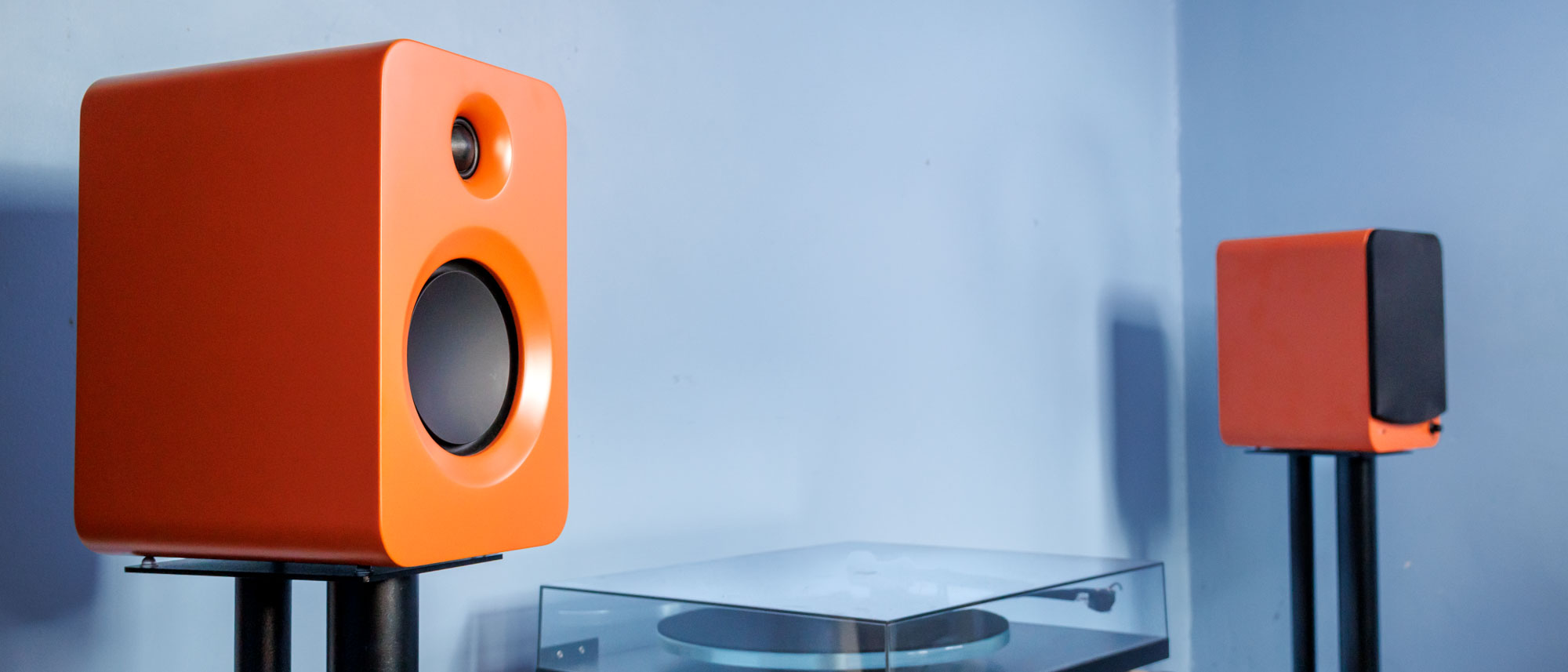Tom's Guide Verdict
The Kanto Ren are more than just a pretty face. They’re an incredibly well-rounded pair of speakers, packed full of inputs and goodies. They also happen to sound really, really good, with buckets of low-end grunt and high-end clarity. They’ll sound better for music than any soundbar you can buy, and they work great for movie and TV watching, thanks to the HDMI port on the back.
Pros
- +
Stunning good looks
- +
Loads and loads of bass
- +
Bright, clear highs
- +
Great array of ports
- +
Orange
Cons
- -
Confusing modes
- -
They can get boomy
- -
Picky about placement
Why you can trust Tom's Guide
Orange. Release anything in orange and you’ve already got my vote. Pack your new product with top-shelf audio hardware and make it orange? You’re onto a winner like the Kanto Ren — some of the best powered speakers I’ve seen take center stage on my speaker stands.
Price $599/£599/AU$1,499
Connectivity Bluetooth, HDMI ARC, RCA, Optical, 3.5mm AUX, USB
Weight 9.9 lb (Active speaker) 8.6 lb (Passive speaker)
Colors Black, White, Blue, Gray, Orange
Compatibility iOS, Android, macOS, Windows
Frequency response 50 Hz - 22 kHz
Beyond their bright colorways, there’s a lot to like about Kanto’s TV speakers. They’ve got an excellent range of inputs — from RCA to HDMI ARC — along with a subwoofer out for the really low stuff.
The Kanto Ren speakers are built like tanks, and I think they look rather handsome whether you display them with or without their fairly sleek speaker grilles.
They’re a bit fussy in placement and their bass can sometimes get boomy, but neither are issues that aren’t simple to fix. Based on my testing, the Kanto Ren is a great addition to the living room for music, or to make your TV sound excellent.
I’d argue they’re an even better bet than a soundbar that costs twice the price. Let’s find out why.
Kanto Ren review: Cheat sheet
- What is it? Stunning stereo speakers
- Who is it for? A stereo soundbar replacement that won’t break the bank
- What does it cost? $599/£599
- What we like: Excellent sound quality, slick style, and all of the inputs
- What we don’t like: Placement is fiddly, and WiFi would have been a lovely bonus
Kanto Ren review: Price and availability
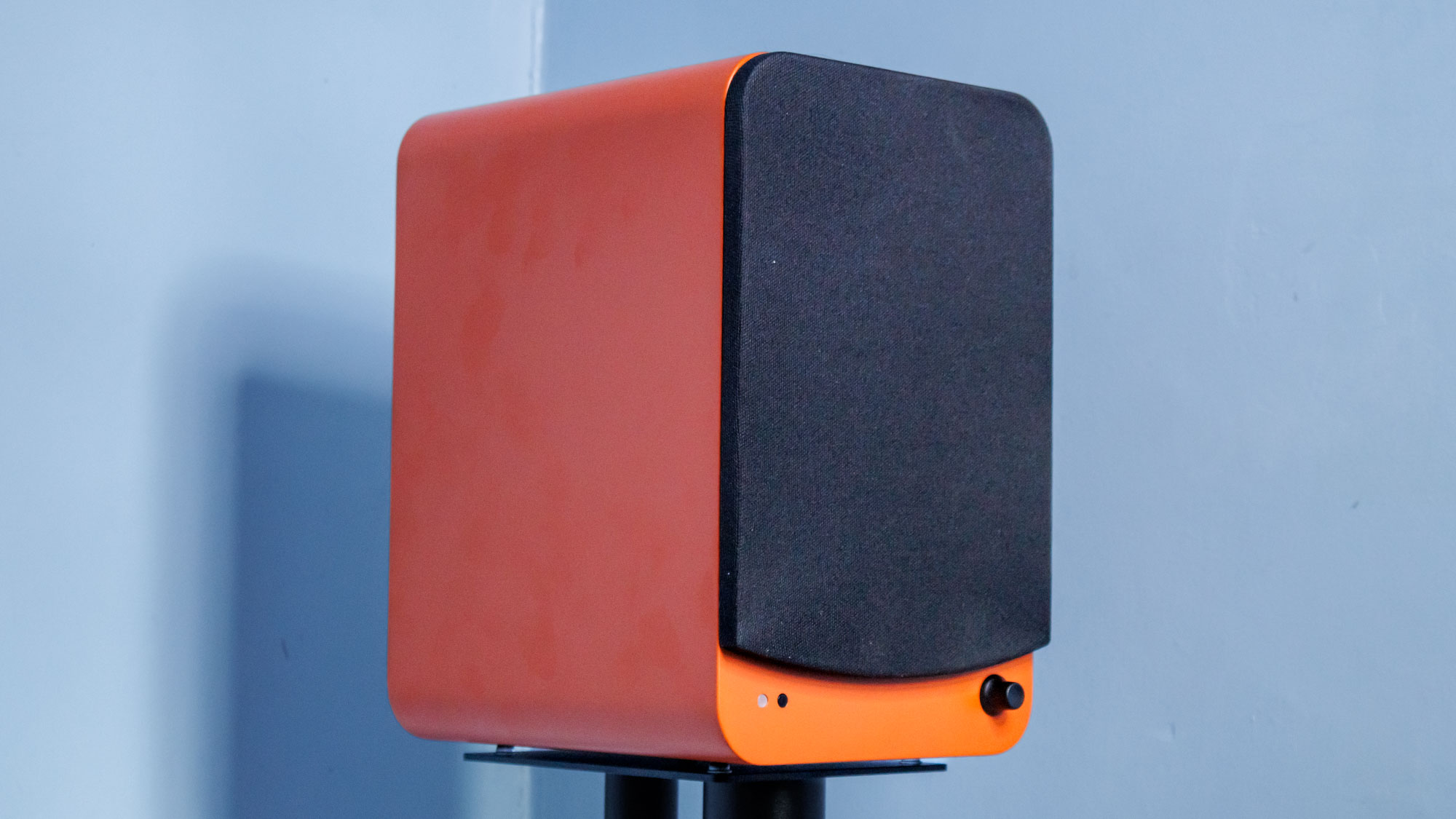
Our best soundbar, the Sonos Arc Ultra, will set you back $999. For the price you admittedly get excellent sound and surround sound options — but it can’t hold a sonic candle next to the sheer audio might of the Kanto Ren.
The best part? The Kanto Ren cost $599, a whole $400 less than the Sonos Arc Ultra.
Get instant access to breaking news, the hottest reviews, great deals and helpful tips.
You will need to budget for some speaker stands if you’re planning on placing them either side of your TV stand, however. As I’ll talk about later, they’re slightly choosy about their location, and while they’ll sit on a TV stand you’ll get the very best out of them if you invest $50 and a little extra space.
Their price brings them alongside mid-range sound bars, which are completely outmatched by the Kanto Ren. While they might not have the same kind of surround options as the likes of the Sony HT-S2000, they make up for it with bigger sound that’s physically better separated due to their ‘true stereo’ nature.
I wouldn’t call the Kanto Ren cheap. They’re more expensive than the similarly specced Fluance Ri71, offering more inputs and improved sound and looks. They’re a more affordable option than the premium soundbars they sonically compete with, and mid-range in price.
You can buy the Kanto Ren from Amazon, or head over to your audio retailer of choice to pick them up in one of five colors; Black, White, Blue, Gray, or Orange. If you choose any color other than the latter, you’re mad. Or boring.
Kanto Ren review: Design and build
- Simple, clean style
- Look great with or without speaker grilles
- Compact shape and size
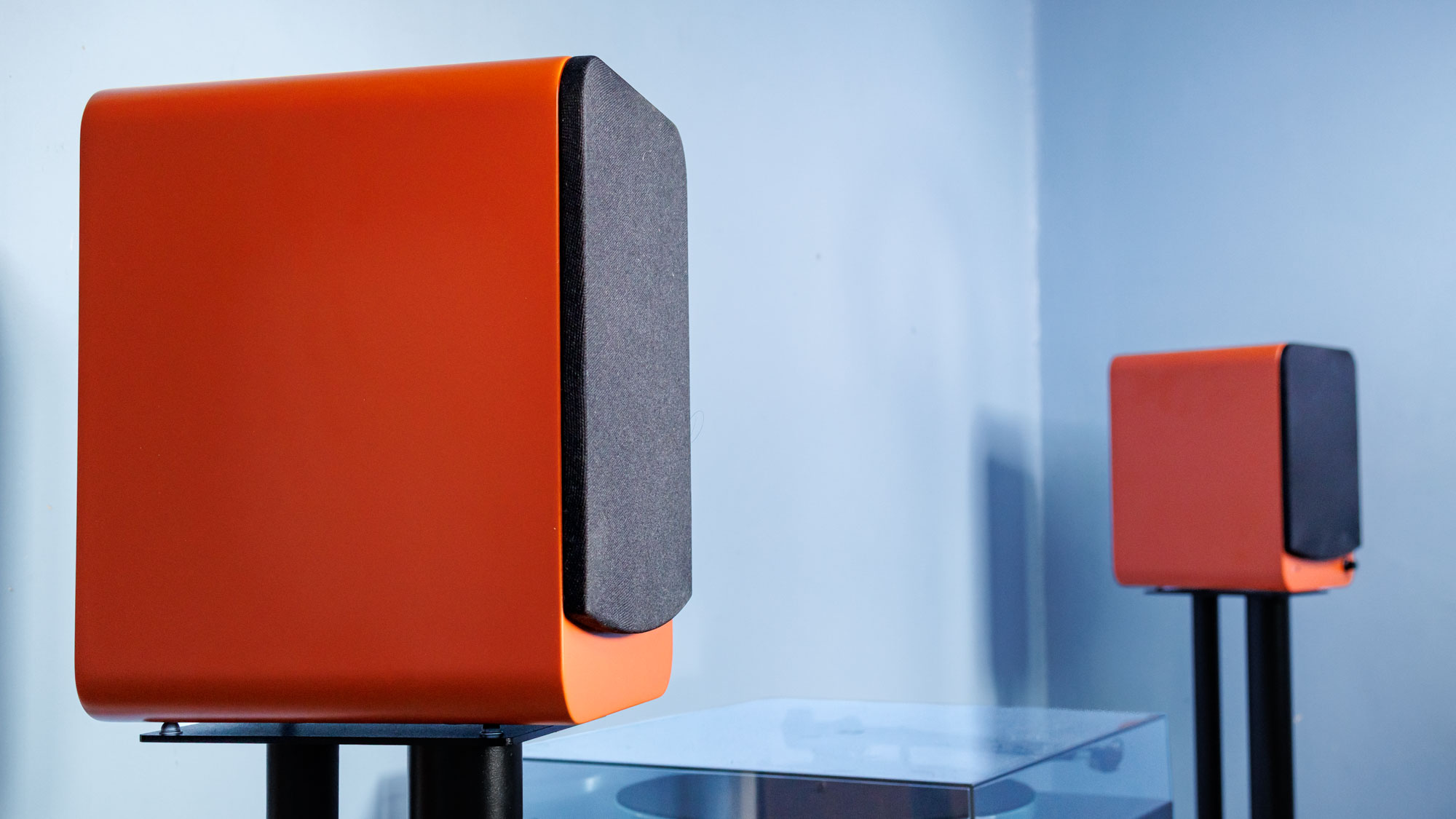
Slap the grilles on the front, and there’s a simplistic elegance to the Kanto Ren. They’re a smooth pair of colored rectangles with a curved black front, and they don’t shout too loudly about their ability to blow your socks off sonically.
Unless, of course, you buy yourself the orange ones. The orange ones I’ve got here — and aren’t they fun. For more minimal interior decor, the black or white colors will fit in nicely, and the blue option is darker than you might expect.
Under the speaker grilles you’ll find the tweeter and main driver unit. It’s a smooth affair, so they won’t look all that complicated if you display them with their drivers out. It’s a simple set of speakers that don’t use odd shapes or multi-driver arrays to tell everyone you care about excellent sound.
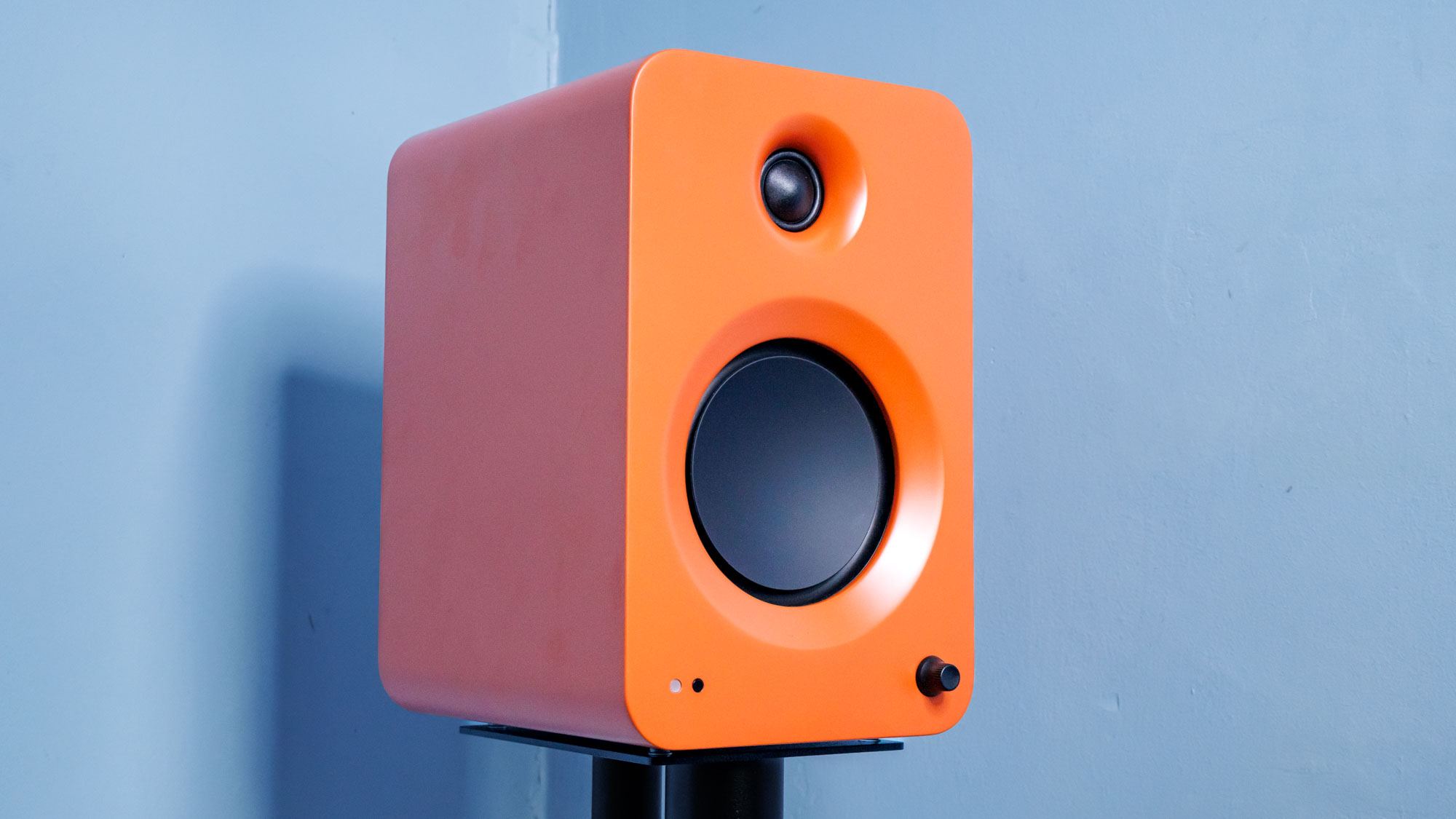
The cabinets themselves are smooth and mostly angle-less, with curved corners to soften their visual load. Add it all together, and I think the Kanto Ren could make a great addition to any living room that’s looking for something extra.
The build quality is good, too. They’re made out of MDF and then coated in their color. The color finish is smooth and blemish-free, and most importantly, consistent over the body of the speaker unit. They’re not the weightiest speakers, lighter than the cheaper Fluance Ri71, but there’s still some reassuring heft in both the powered and passive units.
Overall, they’re a handsome pair of speakers that are built to a very premium standard without costing a fortune.
Kanto Ren review: Controls
- Excellent, detailed remote control
- No app
- On-device nob is not very versatile

The most obvious way to interact with the Kanto Ren is the black volume nob on the powered speaker. Click it to turn them on, click it again to cycle the inputs, and then click and hold to turn the speaker off. Turn it to adjust the volume — and that’s it.
It does everything a nob could hope to do, but it would have been nice to have some more versatile controls on the unit itself should you, heaven forbid, lose the remote control.
Not that you’ll easily lose the remote control. It’s a weighty thing, and it’s fairly chunky in the hands. There are buttons galore across its black plastic fascia.
Here, you can adjust the EQ on the fly with the bass and treble controls, giving more granular control over how the speaker sounds. There’s the requisite volume control, along with a power switch and source selection options. Playback controls are also included, should you be listening over Bluetooth.
The buttons themselves are good and clicky, and their rubber surfaces make them pleasant to press. It’s got just about everything you might want out of a remote control, including controls to initiate the Bluetooth connection pairing process — useful, because it’s the only way to get the BT connection working.
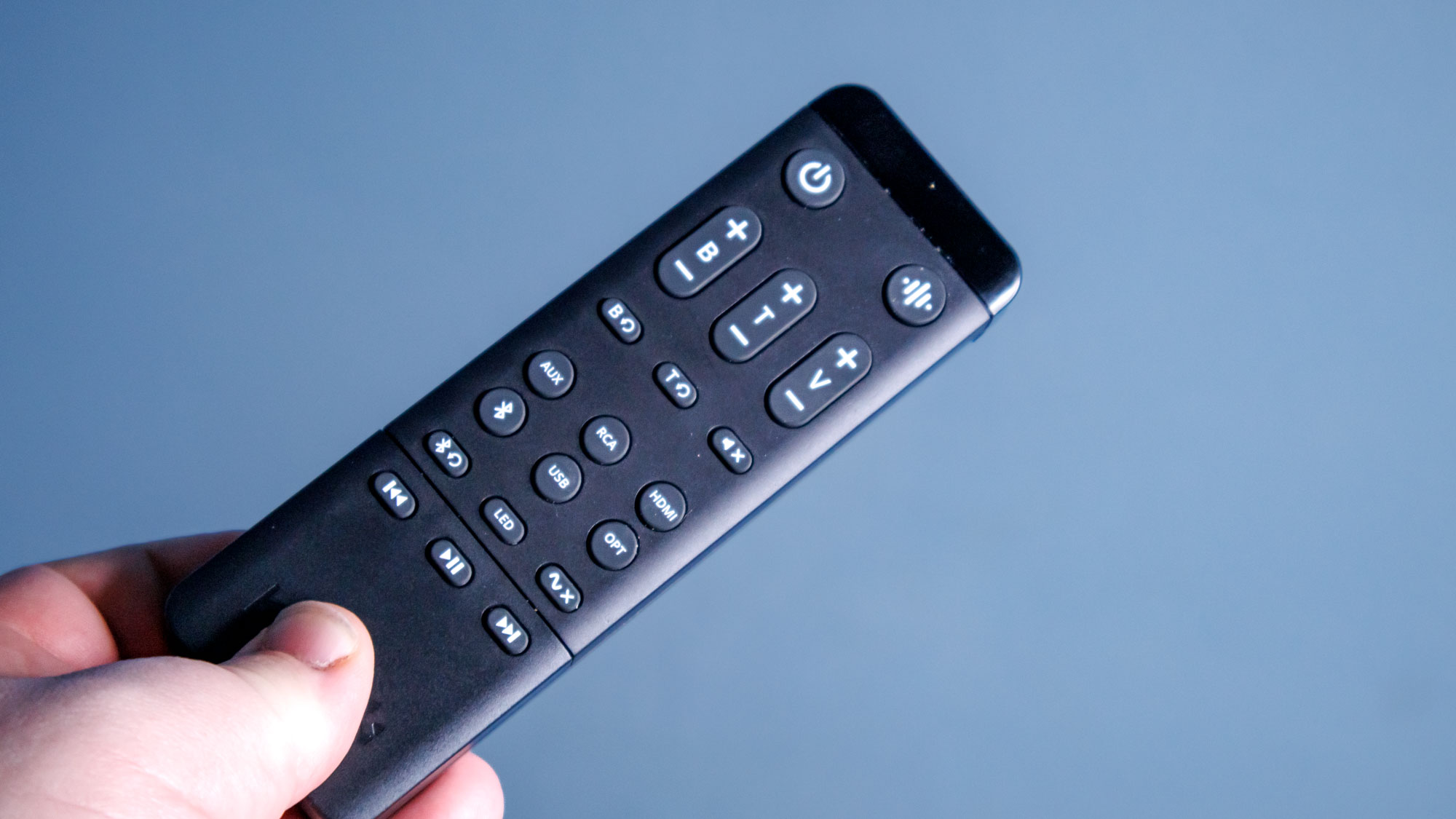
Helpfully, you can also swap the powered speaker from left to right here, depending on which side it sits next to your TV. By default, the powered speaker is on the left — to swap, you click and hold the next track button for 5 seconds.
Need to switch back? Hold the previous track button for 5 seconds. Simple, and you’ll know it’s all initiated properly thanks to a flash of the power LED.
The most useful control for many though is going to the HDMI ARC port and it’s automatic volume and power options. That means your TV remote will control the most important parts of the speaker without the need for a remote.
It would be nice to have a Bluetooth key on the speaker itself, but the control methods are otherwise solid enough.
What would be even better would be a Kanto App, something missing from the whole Kanto range. That would allow for even a greater level of control without extra buttons or switches on the speakers.
Kanto Ren review: Connectivity
- HDMI ARC
- Loads of physical inputs
- No Wifi though
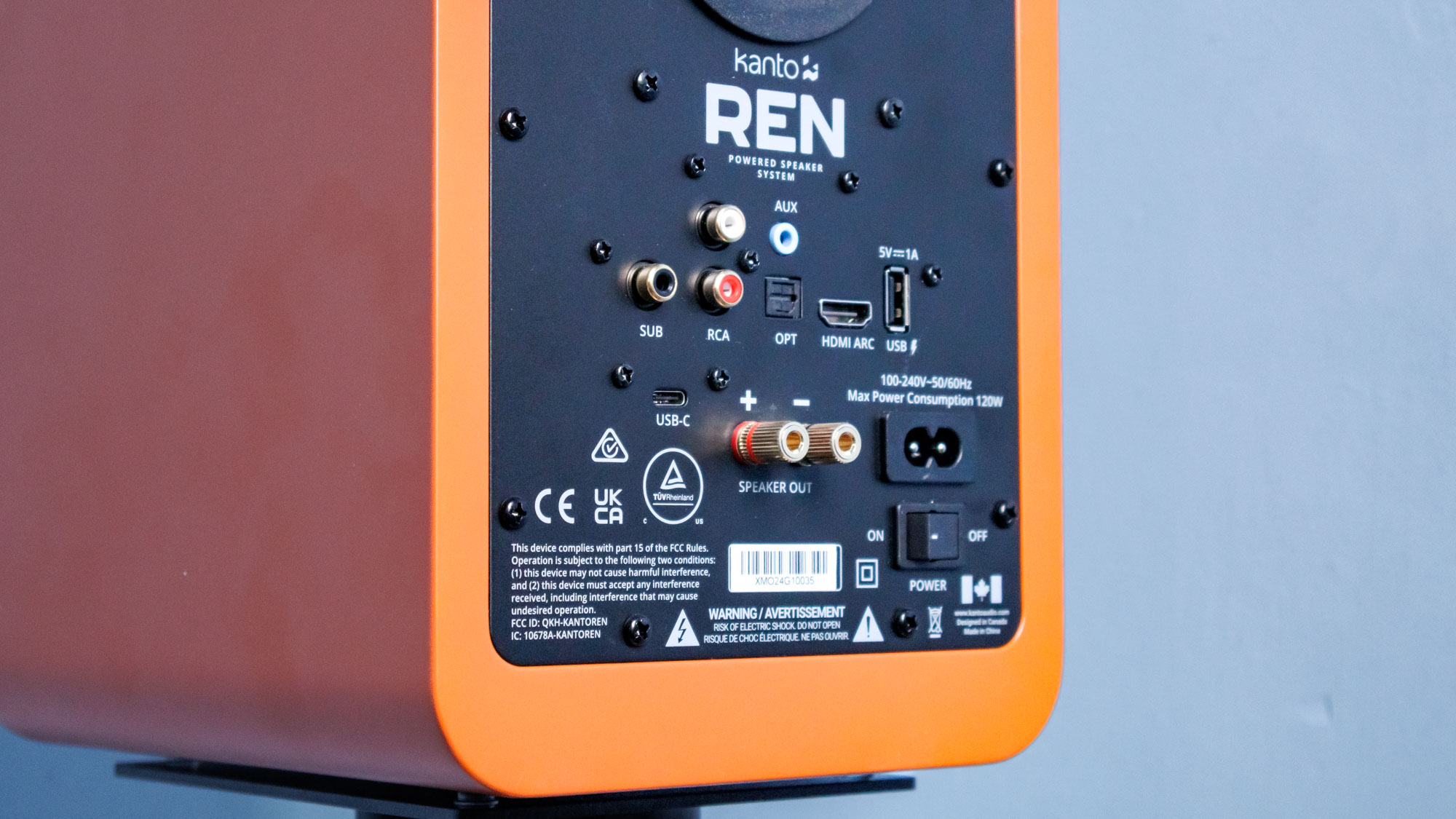
If you’re coming from soundbar land, where you’re lucky to get more than an HDMI port or an optical socket, the array of plugs on the back of the powered REN unit might seem dizzying.
There are loads of ways for devices to interface with the speakers, from your TV to a streaming separate and everything in between.
There’s the aforementioned HDMI ARC port, so that you can plug them into a TV and get your movies and TV sounding epic. I did have to go into the settings menu of my TV and change the audio setting for PCM before they worked seamlessly, but it wasn’t any great hassle.
Once you’ve finished gawking at the HDMI port, there’s a whole host of extra connectors to use with the Kanto Ren. First and foremost are the RCA connectors, so that you can plug in a record player, or a different audio device.
There’s no Phono pre-amp, so you’ll need a turntable with one built in, but if you just want to hook up a streamer like the Wiim Ultra, you’ll be good to go.
Then there’s an optical connector for older TVs and other digital devices, like CD players. It’s a useful legacy connector, and I found it worked well with an old laser disc player.
There's also a USB-A socket, which can deliver power to connected devices, and then a USB-C for better connection with laptops and other devices.
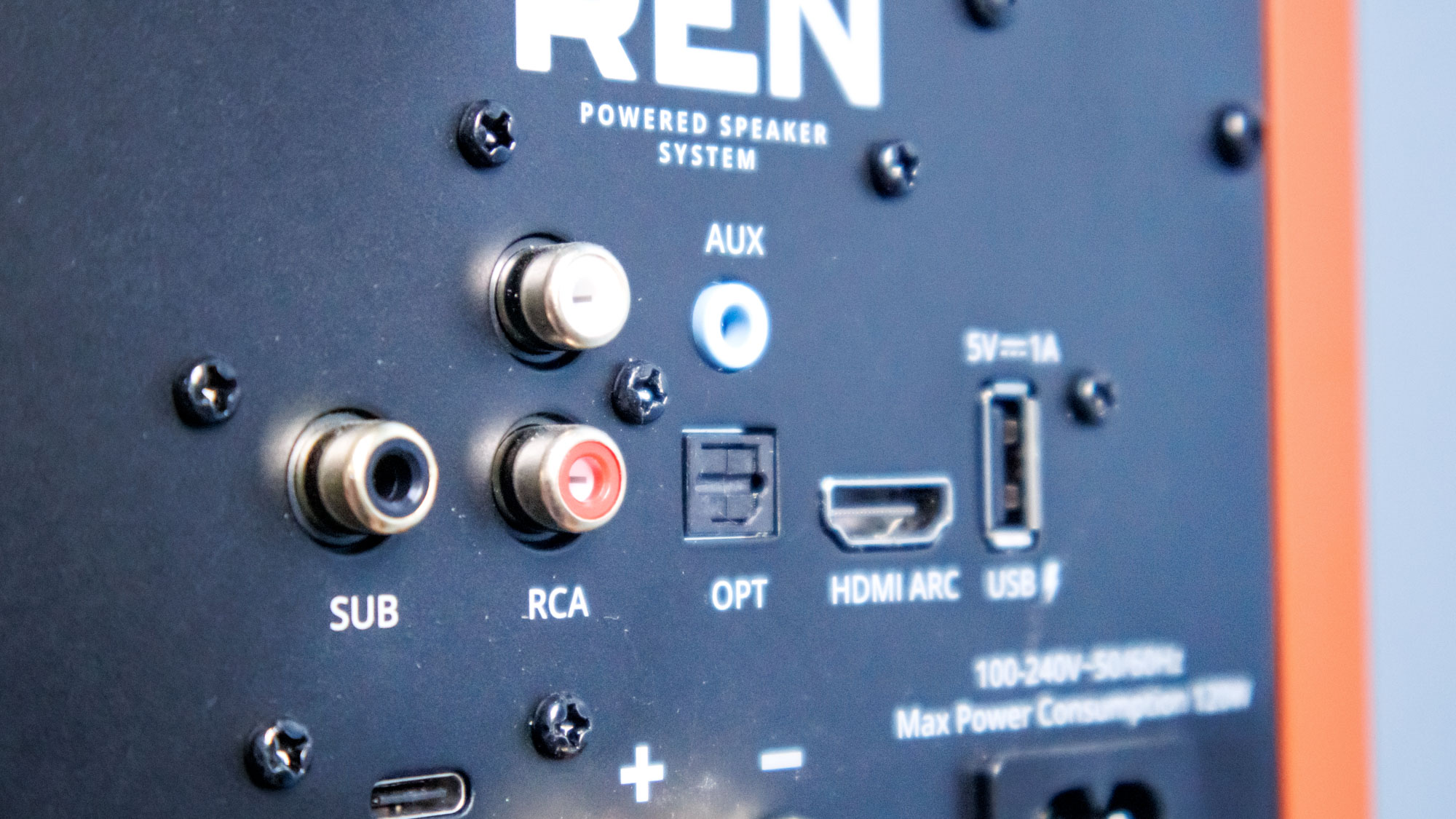
Finally, there’s the 3.5mm connector for auxiliary connections like phones, laptops, or MP3 players.
Bluetooth 5.3 rounds out the connections and lends the speakers their only wireless connection method. You connect with the Bluetooth button on the remote control, and then you can initiate pairing with multiple devices. It works very well with no dropouts. No support for hi-res Bluetooth codecs is a shame though.
You’re not really wanting for any kind of physical connections, apart from perhaps some form of pre-amp for turntables. But that’s really nitpicking — there really aren’t any extra inputs you could want on the back of the speakers.
What you might miss is a Wi-Fi connection. That would allow for much higher quality music streaming without a wire, and make the Kanto Ren more flexible as a result.
It’s omission is likely to make sure that the costs are kept down and adding a simple streamer is very easy, but it would be nice for Wi-Fi be baked into what is already a near-perfect input selection.
Perhaps it’s something we’ll see in a later, potentially more expensive option from Kanto.
Kanto Ren review: Sound quality
- Slightly fussy about placement
- Incredible, well rounded sound
- But there is some boomy bass at times
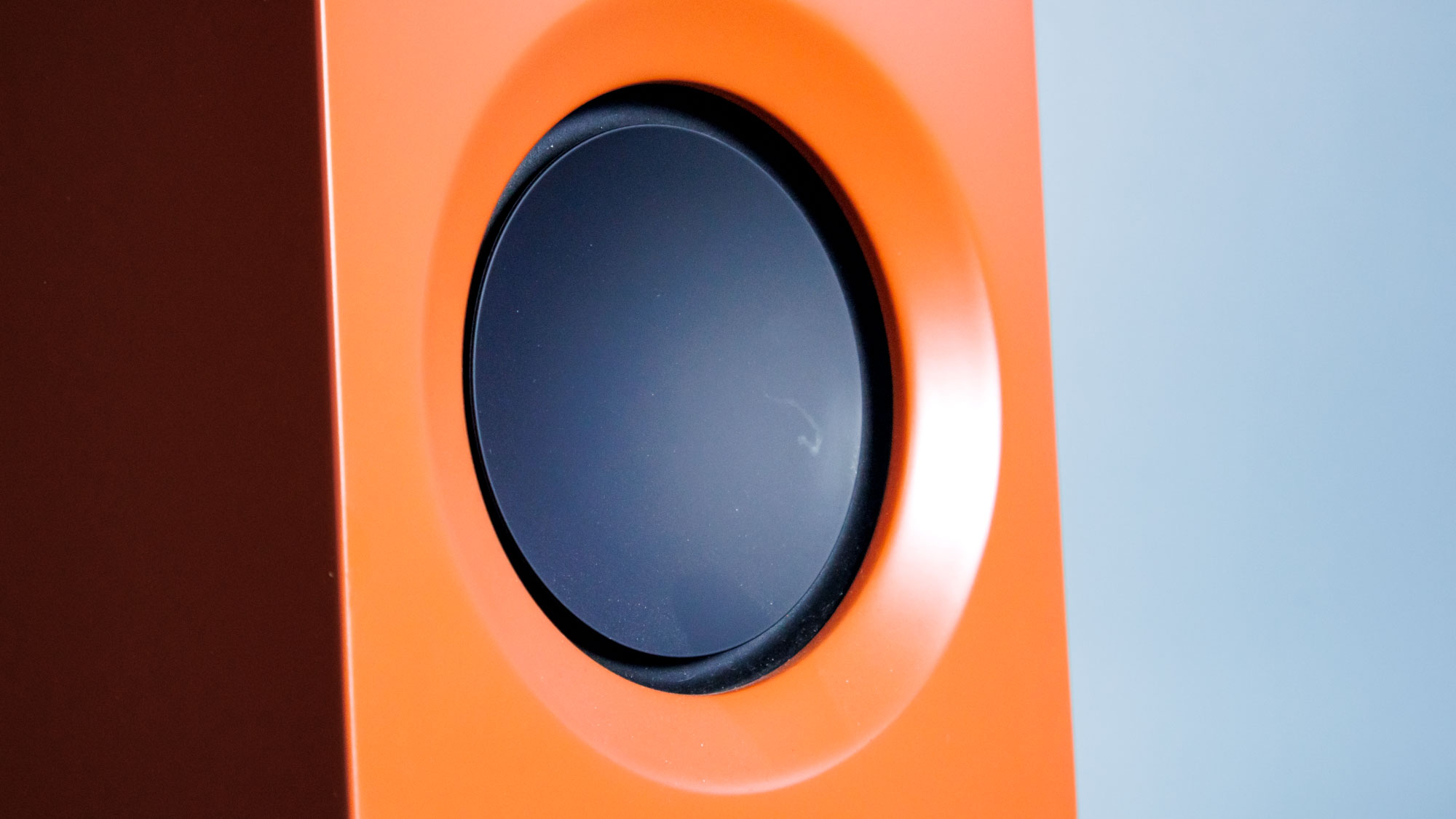
A sound bar is fairly easy to place in a room — just place it on your TV stand, and enjoy the sound as the manufacturer intended. Things are a little different with a pair of stereo speakers, and the Kanto Ren are particularly tricksy in their need for good placement.
You’ll want to place them away from a wall. I found that 8 inches was the sweet spot between space saving and good sound. Too close to the wall and you’ll find the bass gets very overbearing, as its reflected too much back at you.
Then they’ll need to be placed far enough apart for the stereo effect to make a difference to the soundstage. I found six feet to be the minimum, so you’ll need to ensure you’ve got the space.
Finally, to really make the Kanto Ren sound their best, you’ll want them on stands. That’s an extra spend, but it’s well worth the cost.
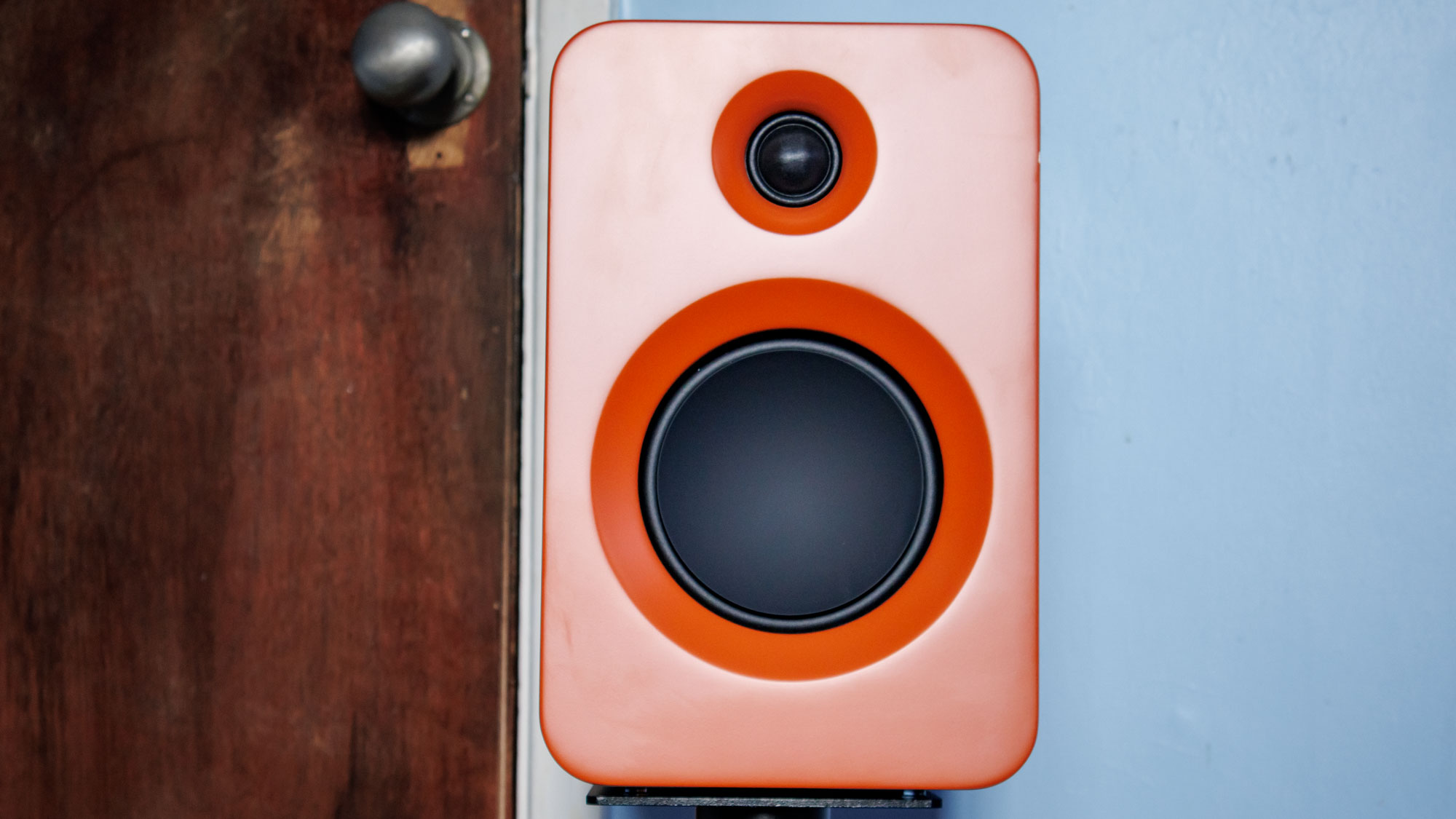
Once they’re all set up you won’t need to worry about moving the Kanto Ren around again — and you’ll get that soundbar crushing sound. It’s all thanks to the actual stereo separation you can achieve with a pair of speakers, physically creating a much wider, more immersive experience.
Add in the larger drivers of the Kanto Ren, and you’ll get more rounded, larger sound with greater presence.
The only way a soundbar can get Dolby Atmos that makes more sense than a pair of stereo speakers is to add extra surround units. That can cost thousands of dollars and take up more space. The benefit of the soundbar is the space saving — you don’t need room on either side of your TV.
Listening to music is what these speakers are best at — and, as you might imagine, you’re in for a sonic treat. I took to one of the best music streaming services, Qobuz, and tested them out with some of my favorite testing tracks.
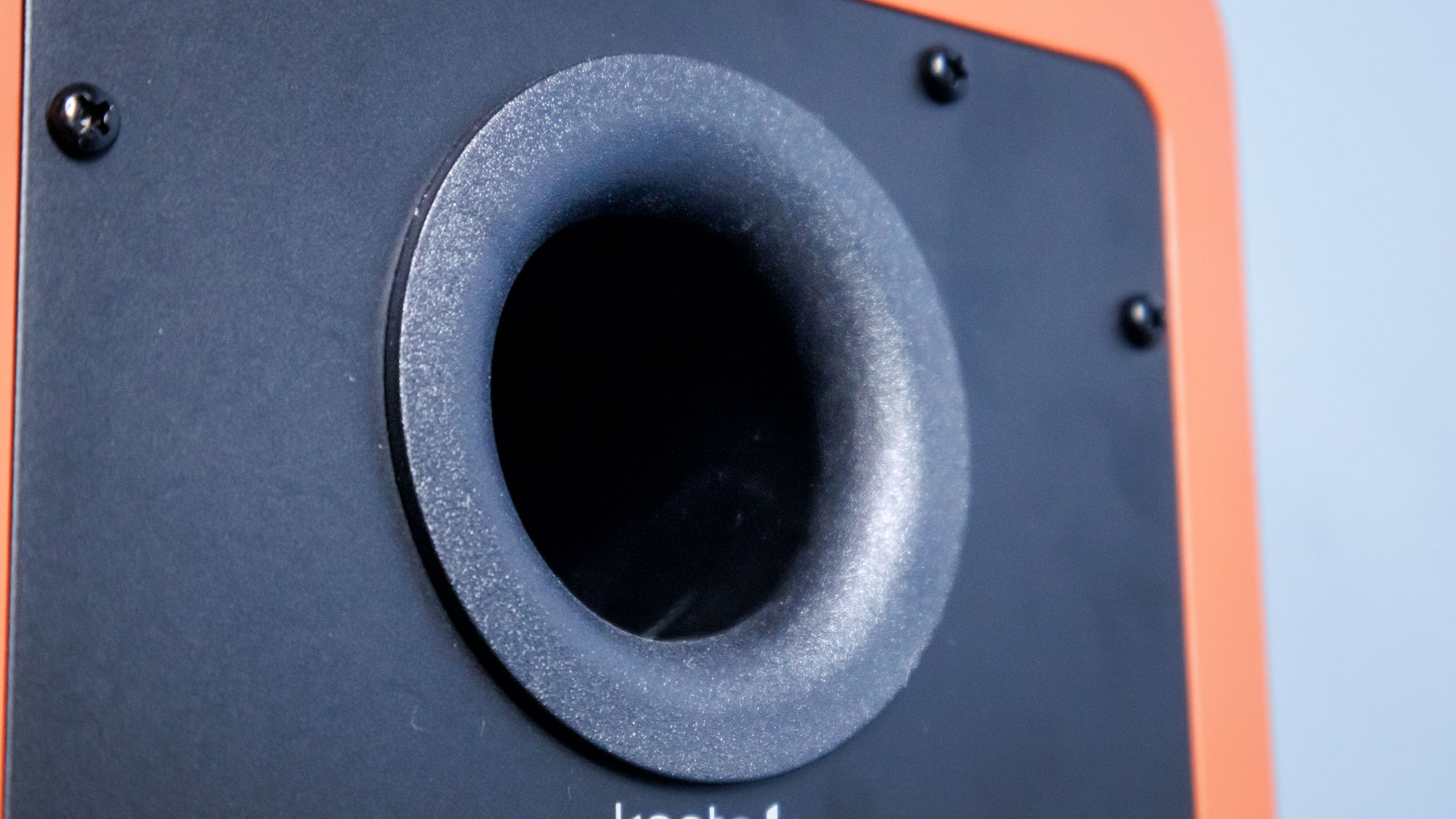
Ghost’s latest Guiding Lights has barely left the play queue since its recent release, so I had to see how it was handled by the Ren. In a word — well.
Forge’s love letter to the 80s ballad brings some top-notch acoustic guitar that needs plenty of presence to cut through an otherwise very busy mix. The vocal line slices through like a knife, devilishly tempting the entire run time.
The kick drum thumps like little else, bringing some immense size to the mix, and if you’ve got the speakers placed right, you’ll find an enormous sound stage. It’s a wonderful, corny presentation, and climaxes with a suitably soaring guitar solo that manages to overlay without disturbing the rest of the frequency range.
ZZ Top’s Sharp Dressed Man pulls you straight back to the early eighties, dripping with rumbling Harley-Davidsons and leather jackets. The rhythmic blues crunch is driven well with some very powerful low-end grunt, while the cymbals up top still manage to keep things in line. There’s perhaps a little boom in the bass guitars, but it’s nothing to ruin the otherwise stellar musical experience on offer from the REN.
How does it stack up to a soundbar?
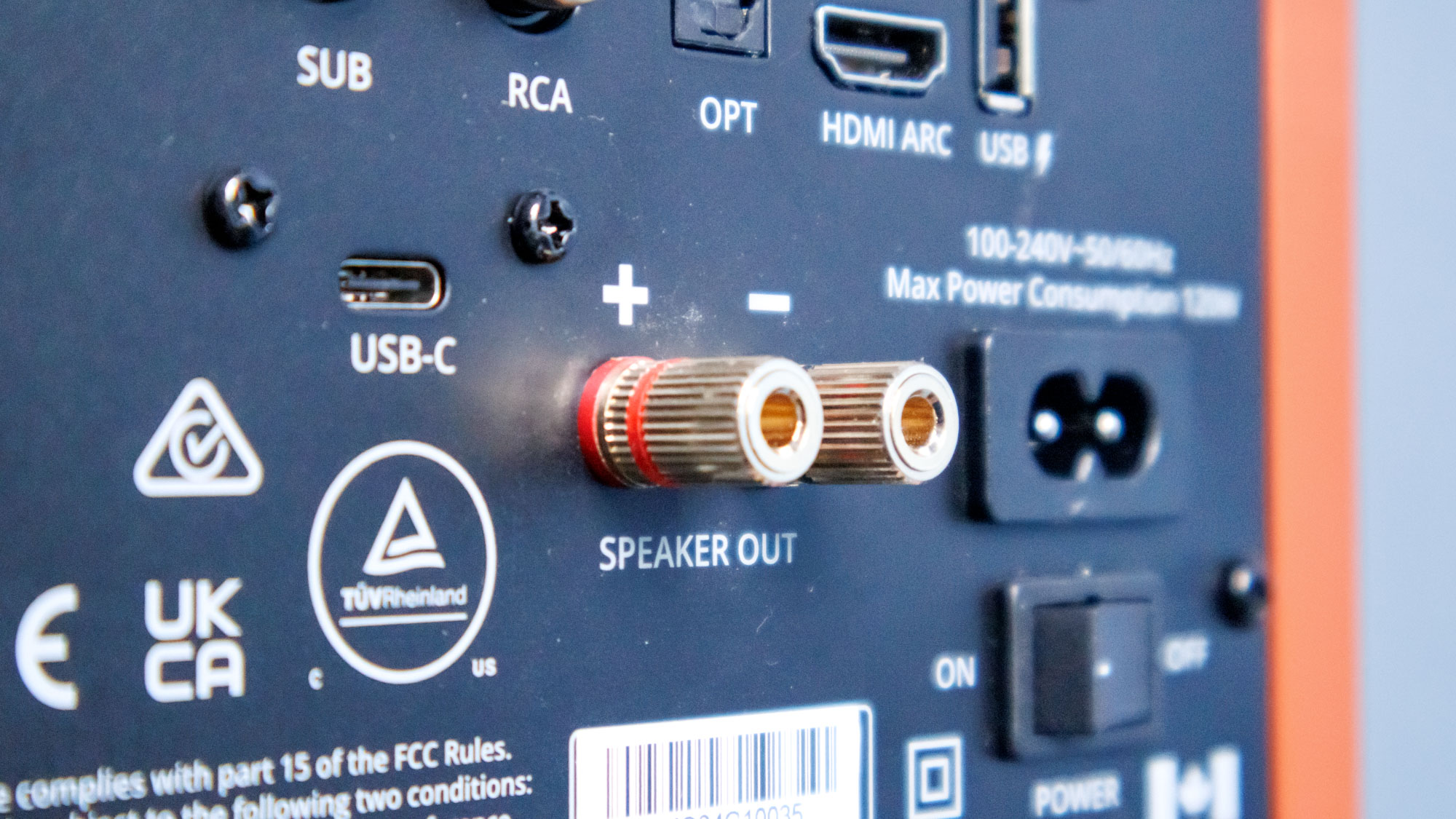
There are tradeoffs — if you want the all-out surround options like Dolby Atmos and DTS X, then you’re out of luck. These are stereo speakers and they deal only it two-channel audio.
Given that most soundbars at this price aren’t very good at Dolby Atmos though, I’d wager you’ll like the sound of the Kanto Ren more.
You don’t really need a sub for the really low stuff in your action movies with the Ren, although you can add one should you want thanks to the sub output on the back. I added one — it’s plenty of fun.
The opening scene of Star Wars Episode III showed me everything I needed to know, and you’d be surprised how good a stereo set up is at making an immersive sound bubble. The ships scream through space, the battle outside never becoming too busy to overlay the sounds you need to hear.
Voices and dialogue are placed well too without a center channel, coming through strong in the middle of the picture. While music is the RENs greatest strength, you’re still going to have an incredible time watching movies and TV.
Kanto Ren review: Verdict
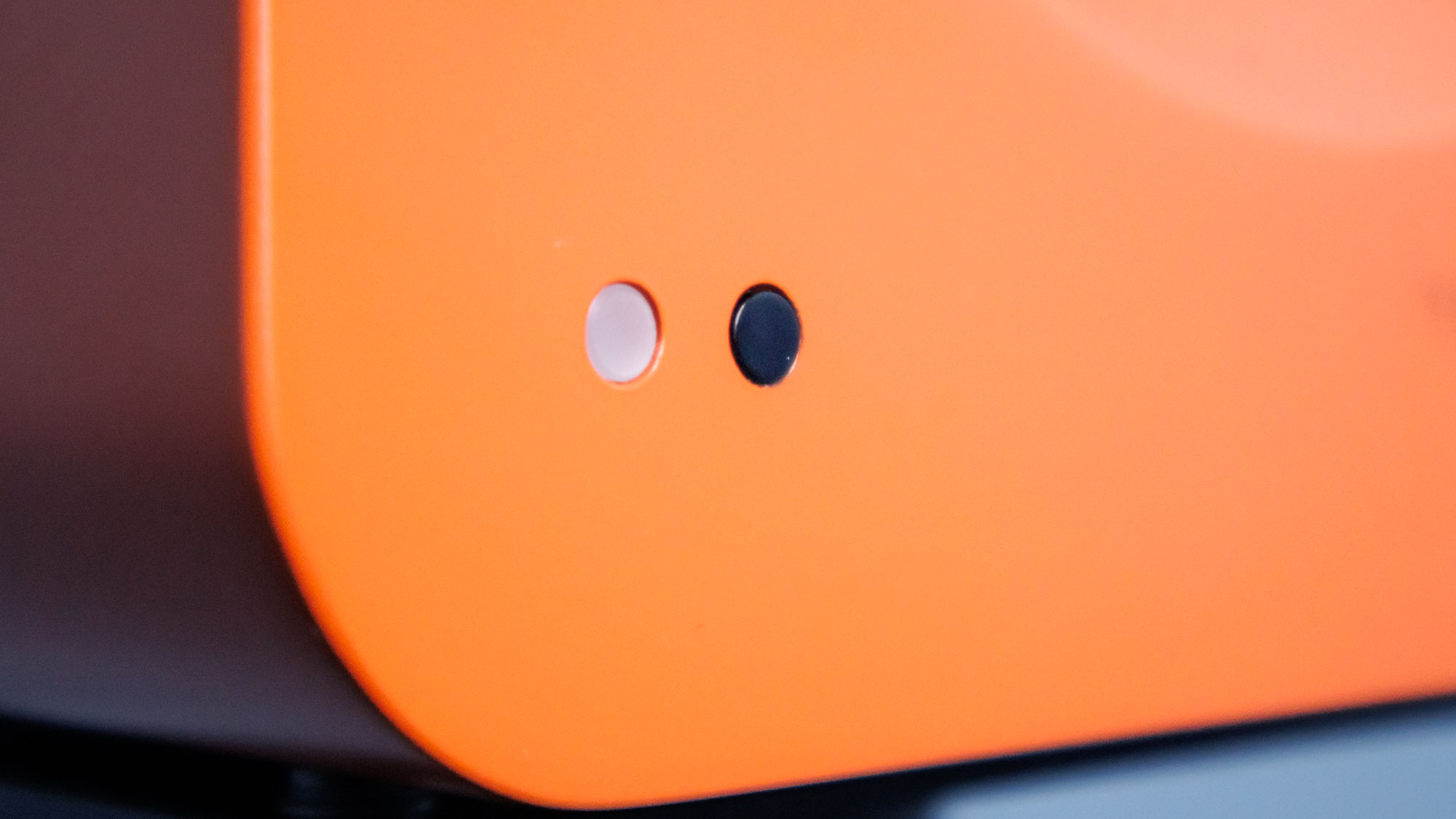
For $599, there a whole bunch of different soundbar options that you could buy. The Sonos Beam Gen 2, the first generation Sonos Arc, and even cheaper options like the Polk Signa 4.
If you absolutely need to have some form of surround or Dolby Atmos for your movies, then you’ll want one of those.
If, however, you want something that sounds better than any soundbar for every other use case and still excels in movies, then pick up the Kanto Ren. They’re a handsome set of speakers, with plenty of low-end to enjoy when things get moving.
This stereo system will outperform soundbars more than twice the price in almost any listening metric. If you don’t quite have the money to stretch for the Kanto Ren, then the Fluance Ri71 speaker system is also worth considering. It’s a bit cheaper, but manages it’s own excellent performance for the price.
For $599, though? There’s not much that gets close to the Kanto REN’s excellent sound, solid styling and dizzying array of inputs.

Tammy and her generous collection of headphones have found a new home — Tom's Guide! After a two-and-a-half-year stint as iMore's resident audiophile, Tammy's reviews and buying guide expertise have more focus than ever on Tom's Guide, helping buyers find the audio gear that works best for them. Tammy has worked with some of the most desirable audio brands on the planet in her time writing about headphones, speakers, and more, bringing a consumer focussed approach to critique and buying advice. Away from her desk, you'll probably find her in the countryside writing (extremely bad) poetry, or putting her screenwriting Masters to good use creating screenplays that'll never see the light of day.
You must confirm your public display name before commenting
Please logout and then login again, you will then be prompted to enter your display name.
